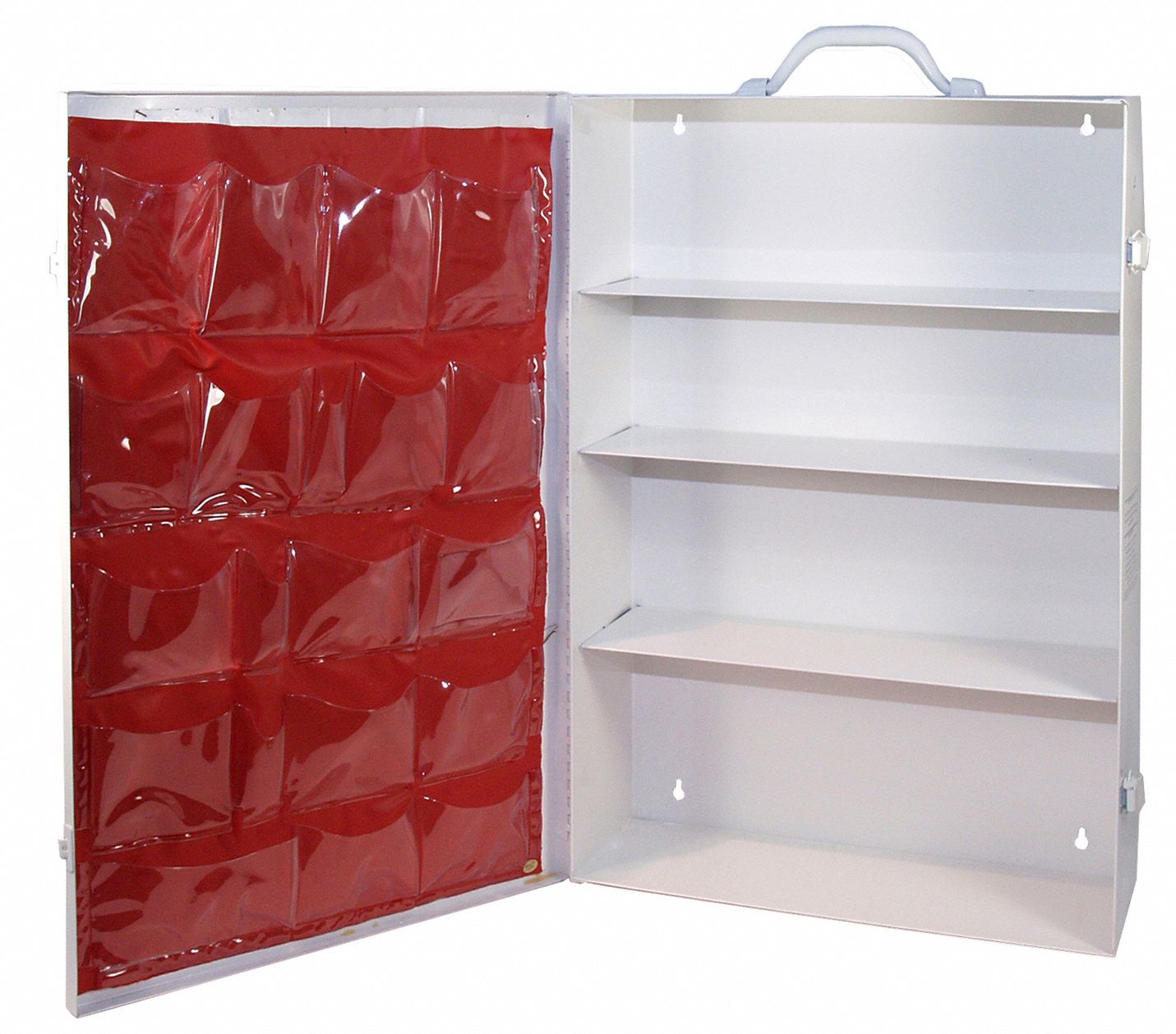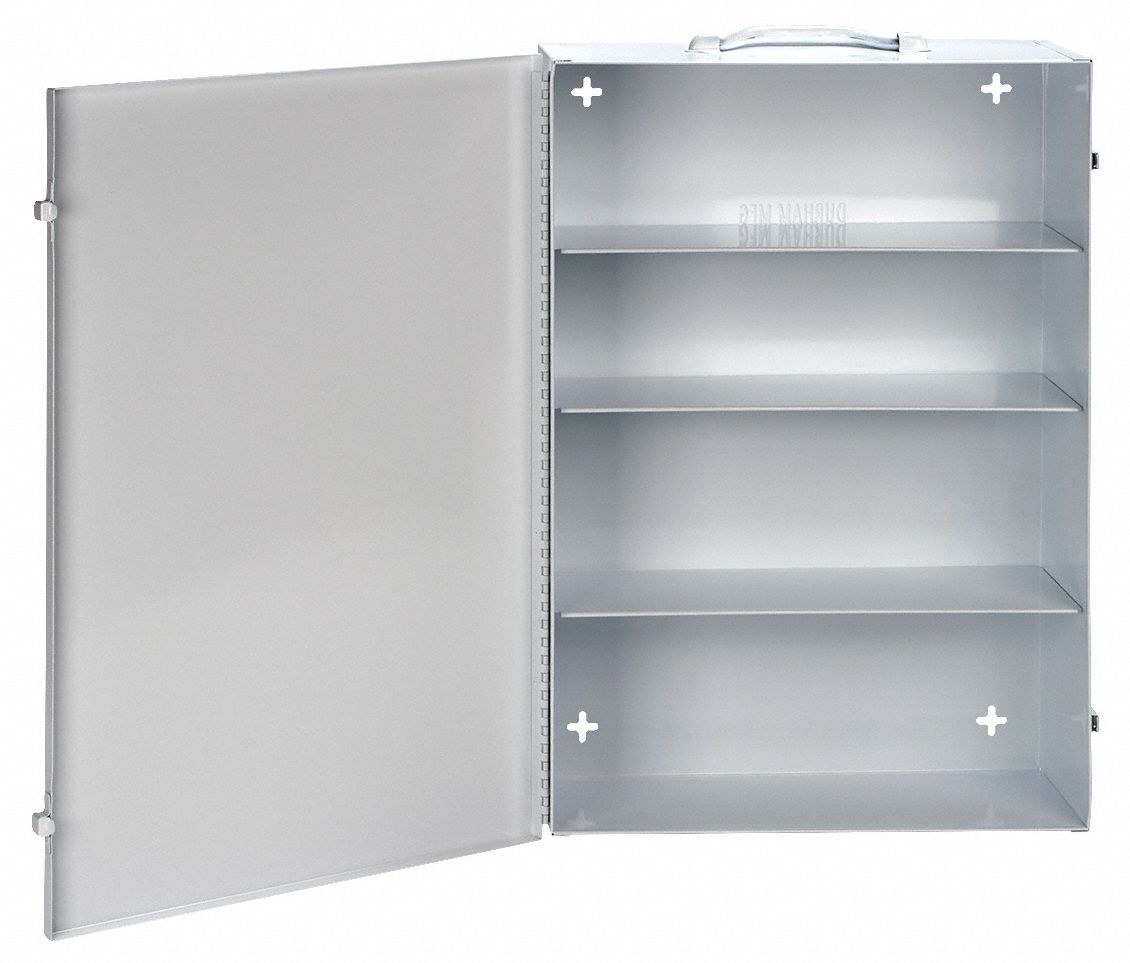Wall-Mounted First Aid Cabinet Features
A wall-mounted first aid cabinet is an essential piece of equipment for any home, workplace, or public space. It provides a safe and convenient way to store essential medical supplies, ensuring they are readily accessible in case of an emergency.
Wall-Mounted Design Advantages
The wall-mounted design offers several advantages over traditional freestanding cabinets. Firstly, it maximizes space efficiency by utilizing vertical space, making it ideal for smaller areas. Secondly, it ensures visibility and accessibility, as the cabinet is prominently displayed and easily reachable. This is particularly important in emergency situations where every second counts.
Essential Features, Wall mounted first aid cabinet empty
A well-designed wall-mounted first aid cabinet incorporates several key features to ensure its functionality and safety.
Size and Material
The size of the cabinet should be appropriate for the intended use and the amount of supplies it needs to hold. Common materials for first aid cabinets include durable plastic, metal, or a combination of both. These materials offer resistance to moisture, impact, and corrosion, ensuring the cabinet’s longevity and safety.
Locking Mechanism
A secure locking mechanism is crucial to prevent unauthorized access to the cabinet’s contents. This is especially important in workplaces or public spaces to ensure the safety and integrity of the medical supplies.
Storage Capacity
The cabinet’s storage capacity should be sufficient to accommodate the required medical supplies. It should have shelves, compartments, or trays for organized storage, allowing for easy identification and retrieval of specific items.
Common First Aid Cabinet Contents
A well-stocked first aid cabinet should include a variety of essential supplies categorized by their intended use.
Wound Care
* Antiseptic wipes: To clean wounds and prevent infection.
* Sterile gauze pads: To absorb blood and cover wounds.
* Adhesive bandages: To cover minor cuts and abrasions.
* Bandage scissors: To cut bandages and other materials.
* Antibiotic ointment: To prevent infection in minor wounds.
Burns
* Burn cream: To soothe and protect burned skin.
* Sterile burn dressings: To cover and protect burns.
Pain Relief
* Pain relievers: Over-the-counter pain relievers, such as ibuprofen or acetaminophen, to manage pain.
* Cold packs: To reduce swelling and pain.
Safety Considerations for Wall-Mounted First Aid Cabinets

It’s crucial to prioritize safety when selecting and using a wall-mounted first aid cabinet. This ensures you have the right equipment readily available in case of an emergency, while also minimizing risks associated with its installation and use.
Compliance with Safety Standards
Meeting safety standards is paramount for any first aid cabinet. This ensures the cabinet is built to withstand potential hazards and provides a safe and secure environment for storing medical supplies. Compliance with OSHA regulations is a good starting point. These regulations Artikel specific requirements for first aid cabinets in workplaces, including their location, contents, and maintenance. Choosing a cabinet that meets these standards ensures you’re equipped with the necessary safety features and are in compliance with legal requirements.
Selecting a Safe Mounting Location
Choosing the right location for your wall-mounted first aid cabinet is vital for accessibility and safety. Consider these factors:
- Proximity to Potential Hazards: Avoid mounting the cabinet near potential hazards like fire extinguishers or electrical panels. These areas might increase the risk of damage or injury during an emergency.
- Accessibility for All Users: The cabinet should be easily accessible to everyone, regardless of their physical abilities. This means choosing a location that is visible, free from obstructions, and within reach of all users. Consider factors like height and proximity to walkways.
- Visibility and Signage: Ensure the cabinet is clearly visible and easily identifiable. Use bright colors or signage to make it stand out, and consider placing a universal first aid symbol for immediate recognition.
Maintaining a Safe First Aid Cabinet
Maintaining a safe first aid cabinet involves regular checks and proper storage practices. Here’s how to keep your cabinet in top condition:
- Regular Inventory Checks: Conduct regular inventory checks to ensure all essential supplies are present and in good condition. This helps identify missing items or expired medications that need replacement.
- Expiration Date Management: Check expiration dates of all medications and supplies. Discard any expired items immediately to prevent using ineffective or potentially harmful products.
- Proper Storage Conditions: Store medications and supplies in a cool, dry, and well-ventilated area, away from direct sunlight and heat sources. This helps maintain their effectiveness and prevents damage.
- Cleaning and Sanitization: Regularly clean and sanitize the cabinet and its contents. This helps prevent the spread of germs and ensures a hygienic environment for storing medical supplies.
Wall-Mounted First Aid Cabinet Applications: Wall Mounted First Aid Cabinet Empty
Wall-mounted first aid cabinets are essential for various settings, ensuring immediate access to essential medical supplies in case of emergencies. These cabinets are designed to provide a safe and organized storage solution for first aid kits, making them readily available when needed.
Workplaces
The presence of a well-stocked first aid cabinet in workplaces is crucial for employee safety and emergency preparedness. These cabinets should be easily accessible to all employees and equipped with appropriate first aid supplies, such as bandages, antiseptic wipes, and pain relievers. The size and contents of the cabinet should be determined by the type of work performed and the number of employees. For example, a construction site would require a larger cabinet with more specialized supplies compared to an office setting.
Wall mounted first aid cabinet empty – A wall-mounted first aid cabinet, when empty, represents a missed opportunity for preparedness. While readily available pre-made cabinets offer convenience, a custom-built option allows for tailored dimensions and functionality. For those seeking a more personalized approach, a detailed guide on how to make a wall cabinet provides a practical framework for crafting a first aid cabinet that perfectly meets individual needs.
A wall-mounted first aid cabinet, empty and ready for supplies, serves as a crucial reminder of preparedness. When space is limited, however, a standard cabinet may be too bulky. Consider opting for a 15 inch depth wall cabinet to maximize storage while minimizing footprint.
These shallower cabinets can still comfortably hold essential first aid supplies, ensuring they are readily available in case of an emergency.

